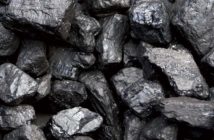(The Financial Express)
Nearly a decade after sweeping reforms were undertaken in the area of non-hydrocarbon minerals to boost investments, domestic production, and value addition, the progress appears to be unsatisfactory. The share of gross value added (GVA) in metallic and non-metallic minerals in the country’s gross domestic product (GDP) had seen a decline from 0.53% in FY16 to 0.45% in FY20. In the five financial years through FY25, the overall GVA grew by an average annual rate of 5.5%, but the “mining and quarrying” segment registered a dismal average of 1.5%. Worse, the mining GVA growth has been declining steadily in recent years: it slid from 6.3% in FY22 to 2.8% in FY25 (second advance estimates). This was despite a reasonable rise in coal production during the period, implying that the non-coal segment as a whole has continued be in the doldrums.
A cursory look at the disaggregated data shows that bauxite production has been stagnant through the last decade, while chromite output even declined. There has been an apparent policy focus on copper and sundry other critical minerals as these are key inputs for many emerging areas. However, domestic copper production fell from 0.79 million tonnes (MT) in FY17 to 0.51 MT in FY24 and just a little over 0.4 MT in the first nine months of FY25. Consequently, import of copper has jumped more than ten times in the last decade, and exports plunged headlong. The 2015 policy introduced mandatory use of the auction route for allocation of non-fuel mineral rights. To spur private investments, composite leases covering prospecting to mining was brought in, along with certainty of tenures and transferability of rights and statutory approvals. However, while several rounds of bidding have since been carried out, investor interest has been modest — in December 2024, the fourth round of bidding for critical-mineral blocks was even cancelled due to poor response.
While stepping up domestic production of assorted deep-seated minerals, including base metals, is vital for the country’s economic growth, the high employment intensity of mining must be another reason for a more well-designed policy support to the sector. Mining can generate jobs 13 times the agriculture sector and six times the manufacturing industry, for every 1% increase in the respective GVA. To be fair, India’s policymakers have promptly followed the global trend of giving increased emphasis on critical minerals, in keeping with its pledge to reduce emission intensity of the GDP. A National Critical Mineral Mission was launched in January this year and tidy sums have been promised out of the Union Budget and public-sector undertaking coffers to give a big push to the sector. Coal India, NTPC, and others have announced overseas ventures to explore battery minerals. New Delhi is also eyeing bilateral pacts with mineral-rich countries.
The recent launch of the country’s first-ever auction of exploration licences for 13 critical mineral blocks along with artificial intelligence-enabled targeting is a step in the right direction. This opens new vistas for private investors. However, the right policy for the sector should be one that acknowledges the limitation of India’s mineral resources. Strategic outbound investments in Africa and Latin America must be an essential element of the policy. Also, the revenue authorities must refrain from treating the sector as a milch cow. While the auction regime was intended to benefit integrated players, it has resulted in proliferation of contractors (mine development operators), and undermined the sector’s employment potential.





